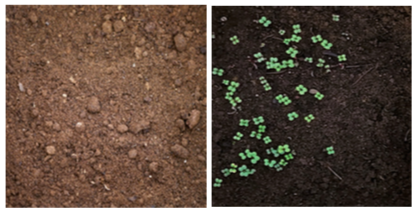Aspectos ecológicos del uso de sorbentes para mejorar la eficiencia de bioremediación de suelos contaminados por petróleo

Publicado 2021-06-28
Palabras clave
- Medio ambiente,
- biorremediación,
- derrame de petróleo,
- sorbente,
- suelo contaminado
- biodestrucción,
- industria petrolera ...Más
Cómo citar
Derechos de autor 2021 Universidad Industrial de Santander

Esta obra está bajo una licencia internacional Creative Commons Atribución 4.0.
Resumen
Hoy, los suelos contaminados son uno de los principales problemas ambientales. Debido a la gran cantidad de tierras contaminadas con petróleo, se están desarrollando nuevos métodos más activamente, así como una combinación de diversos métodos existentes para la eliminación de derrames de petróleo. En este documento, se considera que la biorremediación con el uso de adsorción, reduce la toxicidad y acelera los procesos de destrucción microbiana de hidrocarburos. Hay una gran selección de sorbentes a base de carbono, minerales y materiales naturales. La efectividad de un sorbente en particular variará dependiendo de la región de aplicación, las condiciones climáticas y climáticas, el tipo de suelo y el tipo y propiedades del petróleo. En este trabajo, una turba fue probada como sorbente orgánico (S1), una vermiculita como sorbente mineral (S2) y un sorbente a base de carbono (S3). Los sorbentes fueron agregaron a los suelos contaminados por aceite evaluando el pH, la humedad y la fitotoxicidad de los suelos. Los resultados mostraron que los suelos tratados con sorbentes mantuvieron el pH neutro, aumentaron la humedad y disminuyeron la fitotoxicidad del suelo. La eficiencia del sorbente fue S3> S2> S1.
Descargas
Referencias
Akovetsky, V. G. (2020). ). Geoecological aspects of the technologies applied for construction and recultivation of sludge pits when performing drilling operations. Environmental protection in the oil and gas industry(5), 5-11.
Akovetsky, V. G. (2020). Geological problems of oil and gas complex and ways of their solutions. Environmental protection in the oil and gas industry(4), 7-14.
Antizar-Ladislao, B., Lopez-Real, J., & Beck , A. (2004). Bioremediation of polycyclic aromatic hydrocarbon (PAH)-contaminated waste using composting approaches. Environmental Science and Technology, 34(3), 249-289.
Antizar-Ladislao, B., Lopez-Real, J., & Beck, A. J. (2005). In-vessel composting–bioremediation of aged coal tar soil: effect of temperature and soil/green waste amendment ratio. Environment International, 31(2), 173-178.
Artyukh, E. A., Mazur, A. S., Ukraintseva, T. V., & Kostyuk, L. V. (2014). Prospects for the use of biosorbents for cleaning reservoirs during the elimination of emergency oil spills. Saint Petersburg.
Ellis, M. M., Ivan, J. S., Tucker, J. M., Schwartz, M. K., & Ellis et al. (2015). Methods in Ecology and Evolution. США.
Elssaidi, M. A., & ALSHEBANI, A. K. (2012). Bio- Remediation of Contaminated Soils with Petroleum Hydrocarbons and their Suitable Environmental and Biological Conditions. Environmental and Biological Sciences, 1(1), 13-14.
Gaur, N., Narasimhulu, K., & PydiSetty, Y. (2018). Recent advances in the bio-remediation of persistent organic pollutants and its effect on environment. Journal of cleaner production, 198, 1602-1631.
Kondrashina, V. S., Strijakova, E. R., Zinnatshina, L. V., Bocharnikova, E. A., & Vasilyeva , G. K. (2018). Influence of activated carbon and other additives on bioremediation rate and characteristics of petroleum-contaminated soils. Soil Science (Special Issue), 183(4), 150-158.
Mikhedova, E. E. (2020). Application of biopreparats to solve the problems of oil pollution remediation of soil cover. Environmental protection in the oil and gas industry(4), 10-14.
Mohan, S. V., Kisa, T., Ohkuma , T., Kanaly, R. A., & Shimizu, Y. (2006). Bioremediation technologies for treatment of PAH-contaminated soil and strategies to enhance process efficiency. Environmental Science and Bio/Technology, 5(4), 347-374.
Vasilyeva, G., Kondrashina, V., Strijakova, E., & Ortega Calvo, J. J. (2019). Adsorptive bioremediation of soil highly contaminated with crude oil. Science of the Total Environment. doi: https://doi.org/10.1016/j.scitotenv.2019.135739
Zinnatshina, L. V., Strijakova, E. R., Danshina, A. V., & Vasilyeva, G. K. (2018). Influence of sorbents on the rate of bioremediation and properties of soil contaminated with a mixture of petroleum products. Natural and technical Sciences(9), 24-30.